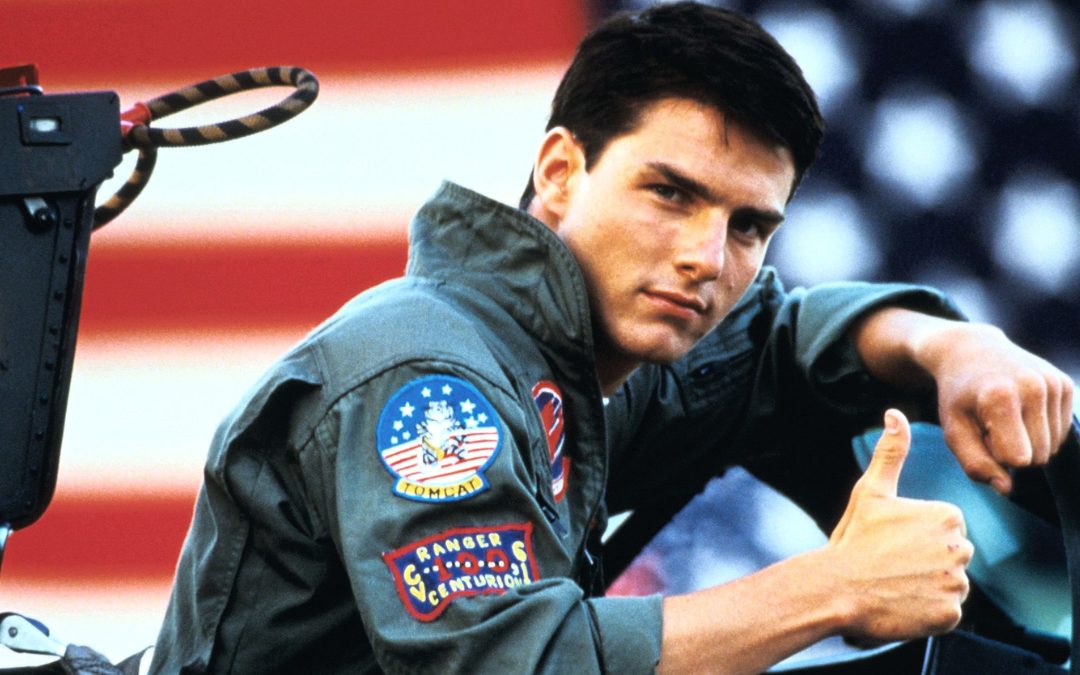Tom Cruise, who will turn 61 on July 3rd, is currently a male. He is called back to mentor a group of younger stick jockeys who refer to him as Pops and Old-Timer until he earns their respect in the air.
However, he does not look it at all, even in imax close-ups so tight you can study the grain of his tooth enamel. This adds a note of cognitive dissonance to “Top Gun: Maverick,” the long-awaited sequel.
Sixty is no longer a set-in-stone age, not even for a physically demanding performer like Cruise. Mick Jagger failed to reach that milestone in 2003, and Sylvester Stallone failed to do so in 2006.
Despite this, both men are still active and engaged in activities similar to those they have always done, likely due to good habits and/or medical advancements previously thought to be the stuff of science fiction.
But the kind of performance expected from a Rolling Stone or an Expendable is one thing, and the effort that Tom Cruise seems to expect of himself is quite another.
If you’ve seen any of Tom Cruise’s most recent movies, such as “Maverick” and the upcoming “Mission: Impossible—Dead Reckoning Part One,” which marks Cruise’s seventh turn as the secret agent Ethan Hunt, you know that he still performs as many of his stunts as are ethically and legally feasible.
You know this because it’s an uncommon stance for an actor to adopt in the era of computer-generated imagery, and also because Cruise makes sure that no one forgets it.
More than any other Paramount Pictures-affiliated star this side of the “Jackass” actors in recent years, Cruise has increased his dedication to public physical risk-taking.
He has hung over the side of an Airbus while it was flying over the English countryside for previous “Mission: Impossible” films, hanged from a two thousand foot cliff in Utah, and scaled the face of Dubai’s Burj Khalifa, a twenty-seven hundred foot building.
Because he couldn’t attend in person because filming “Dead Reckoning,” Cruise sent a pre-recorded introduction instead, in which he’s sitting on top of a biplane flying over South Africa.
The teaser for the seventh “Mission: Impossible” was initially seen by theatre owners at CinemaCon in April. With the twelfth-highest box office earner of all time still attached, Cruise wishes the exhibitors well before the plane plunges into a gorge.
Before Robert Downey, Jr. was cast as Tony Stark in the 2008 film “Iron Man,” Cruise declined the position; one wonders whether he did so because Marvel refused to create for him a real rocket-powered robot outfit to fly around in.
Again, the film from the biplane incident will never be seen by the general public because it was used for a trailer reveal at an industry gathering. You have to question why he went to the trouble even if the stunt was perhaps safer than it appeared to be.
The journalist Didier Allouch posed a variation of this question to Cruise during an otherwise comically nonrevealing Q&A at the Cannes Film Festival last week—billed as a Masterclass Conversation, with an actor who has mastered the art of saying nothing.
“You have a business and children,” said Allouch. How come you do it? Nobody ever questioned Gene Kelly, “Why do you dance?” The cruise was prepared with a statement that would go down in Tom Cruise’s history.
You wouldn’t, though, because Gene Kelly was primarily a dancer, and that is what dancers do. However, Cruise’s response is intriguing for several reasons.
By using Kelly as an example rather than, say, Fred Astaire, Cruise was drawing comparisons to a performer known for his on-screen athleticism, fierce competitiveness, height insecurities, and allegedly authoritarian perfectionism behind the camera.
According to Debbie Reynolds, giving birth and performing in “Singin’ in the Rain” were the two toughest things she had ever done. Kelly is alleged to have worked her until her feet bled and himself until his feet bled as well.
Along with Cruise, Kelly was a celebrity who had auteur-like levels of creative control over all of his productions, even those that he didn’t formally direct.
The Kelly allusion may be the most significant because it suggests that, more than two decades after his last Oscar-nominated performance in Paul Thomas Anderson’s “Magnolia,” Cruise still views himself more as a celebrity stuntman than a thespian.
If this is the case, it is a perceptive statement from an actor whose level of self-awareness is becoming increasingly difficult to ascertain. Years ago, whenever the topic of Tom Cruise came up, my default position was that the actor’s best movies were those in which the director made an effort to probe the actor’s Tom Cruise-ness or to pierce his force field—movies that reframed Cruise’s cocky grin as a rubbery “Mission: Impossible” mask concealing some deeper neurosis.
I’d typically include “Jerry Maguire,” “Vanilla Sky,” “Magnolia,” and especially “Eyes Wide Shut,” in which Cruise only partially knowingly takes part in a deliciously vicious dissection of the Cruise-Nicole Kidman marriage that is being supervised by the devil marital counselor Stanley Kubrick. I’ve been repeating this to people for so long that I’m not sure I still believe it.
The fundamental romance in “Jerry Maguire,” a fairy tale of codependence, as well as the Clarence Thomas joke suddenly rings moderately terrifying.
Additionally, even while “Magnolia” and “Eyes Wide Shut” are still among the best films that also happen to star Tom Cruise, it is difficult to argue that they are the best Tom Cruise films since they are so disjointed from what Cruise, it is evident, considers to be his life’s work.
These movies could reveal something about him. For example, when Cruise refuses to answer a question and then threatens to hit a reporter in “Magnolia,” it foreshadows the uncomfortable silences he would have with Matt Lauer and Peter Overton, an Australian “60 Minutes” reporter, during the 2005 press tour for “War of the Worlds.”
But I’ve come to think that the only places where Cruise makes statements about himself are in his big, adrenaline-pumping blockbusters. The early 2000s and late 1990s Cruise films hint at an actorly path that was not taken.
And, unfortunately, so few directors have ventured to place him in comedies because he provides two of his best performances—one as a furry film executive in Tropic Thunder and the other as the hair-metal peacock Stacee Jaxx in “Rock of Ages”—in those films.
But as time goes on and Cruise hasn’t done anything onscreen but risk his life for the sake of fiction, I find myself less and less interested in the what-ifs of his career and more and more captivated by what he’s chosen to do as an actor and a public figure in its place.
Since Cruise’s rant on Lauer over Ritalin, he has rid his on-the-record character of all elements that are recognizable as messy and human. He has been a member of the Church of Scientology since around the time the original “Top Gun” was released.
Whether he has been restrained by the organization or not, he is now a public figure so staunchly on the message that he verges on Lynchian in interviews.
When asked to recollect his most memorable movie-going experience by Regal Cinemas’ in-house magazine Moviebill—not exactly a gotcha question—he responded with a response of more than 100 words that included only the phrase “Incredible experiences” and no movie titles. Comedy and drama.
That’s what I love,” he said as if he believed that revealing a handful of his favorite films would compromise his intended universality.
Last year, the actor Miles Fisher and the visual effects artist Chris Umé used deep fake technology to make a series of eerily lifelike TikTok videos of Fisher acting as Cruise, saying things like, “Incredible—how come nobody ever told me there’s bubblegum?” and biting into a Blow Pop.
They are effective in part because Tom Cruise’s genuine effect has become so similar to how a highly developed artificial intelligence might approach speaking to reporters.
The best imitation of Tom Cruise you’ve ever heard is Cruise’s genuine laugh. Even though he has become more robotic in real life, his current work on the big screen is characterized by a commitment to the authentic.
It has begun to feel like Cruise is defending relatable humanity in a genre of film that has less and less use for real people moving through physical space thanks to his approach to the production of massive blockbusters—his determination to show us Tom Cruise doing that dangerous thing, rather than a double or an array of pixels in the shape of a man—instead of Ethan Hunt or Captain Pete (Maverick) Mitchell doing that dangerous thing.
Tuesday’s “Top Gun: Maverick” imax screening was preceded by an introduction video in which Cruise greeted us all for attending and assured us that the film would have “actual F-18s, genuine Gs, and real speed.”
That’s “Gs” as in g-force, and if that sounds like mere hype, I assure you that you are grossly underestimating the visceral impact of watching close-ups of Cruise and his co-stars, who are graduates of a three-month flight-training program created by Cruise himself, a skilled pilot, perform real aerobatic maneuvers in real F-18s while making what I assume to be their real I’m-about-to-poop-all-over-this-
Forty-plus years after 1978’s “Superman” attempted to convince us that a man can fly, it turns out that all it takes to make human flight appealing once more are sequences of actors in the kind of physical anguish you can’t deep-fake.
According to what Cruise portrays about himself in his blockbusters, he may be unable to imagine what he would portray on a smaller canvas because he is almost psychotically driven to make these types of movies, which are becoming less and less common.
The cruise was also questioned about the possibility of “Maverick” bypassing theatres and going straight to streaming at the same Masterclass interview in Cannes, which has since been postponed from its originally planned release in the first June of the pandemic. That would never happen, according to Cruise. This also seems to be Cruise clinging to a thin line with his star power.
Jim Gianopulos, the chief executive officer of Paramount Pictures, was fired by the studio’s parent company, Viacom CBS, during that two-year hold, reportedly because he was hesitant to jeopardize the studio’s standing with theatre owners and celebrities like Tom Cruise by promoting new releases on Paramount+, the company’s streaming service.
The stakes with films like “Maverick” and the upcoming “Mission: Impossible” may be existential—both for Cruise and for movies as we’ve known them—in a world where the viability of attending the movies in a theatre has been questioned.
The underlying message of Cruise’s cursing out of two “Mission: Impossible” crew members for violating covid protocol on set in 2020—a rarer-than-ever uninhibited moment that was recorded on tape and leaked to a British tabloid—was that he believes it is his responsibility to drag the industry out of the post-pandemic doldrums.
Although safety was the focus of the outburst, the true point was how much depended on “Mission: Impossible” to continue to offer evidence that it was viable to resume film production throughout the conflict in Iraq.
Because of us, Cruise continued, “They are currently making movies back there in Hollywood.” We’re going to be creating thousands of jobs. This movie won’t be stopped, we promise.


